Submitted by WA Contents
After The Crowds Leave: 4 Abandoned Stadiums That Avoided Demolition
United Kingdom Architecture News - Oct 06, 2013 - 19:55 14525 views
article by James Bartolacci
Over the last two decades, the popularity of major international sporting events like the Olympics and FIFA World Cups has grown immensely. Recognized for their ability to bring widespread media attention and economic investment, nations across the world bid to host these events by proposing exorbitantly expensive and unabashedly contemporary stadiums and sporting facilities to host athletes and spectators.
However, with a bevy of news articles reporting on the dilapidation and disrepair of these mega-stadiums after the conclusion of the Olympics and FIFA games, it is well known that countries face extreme difficulty trying to figure out how to repurpose these venues to become active and productive centers in urban fabrics. And, the problem of abandoned sports facilities and stadiums are not intrinsically tied to just international games.
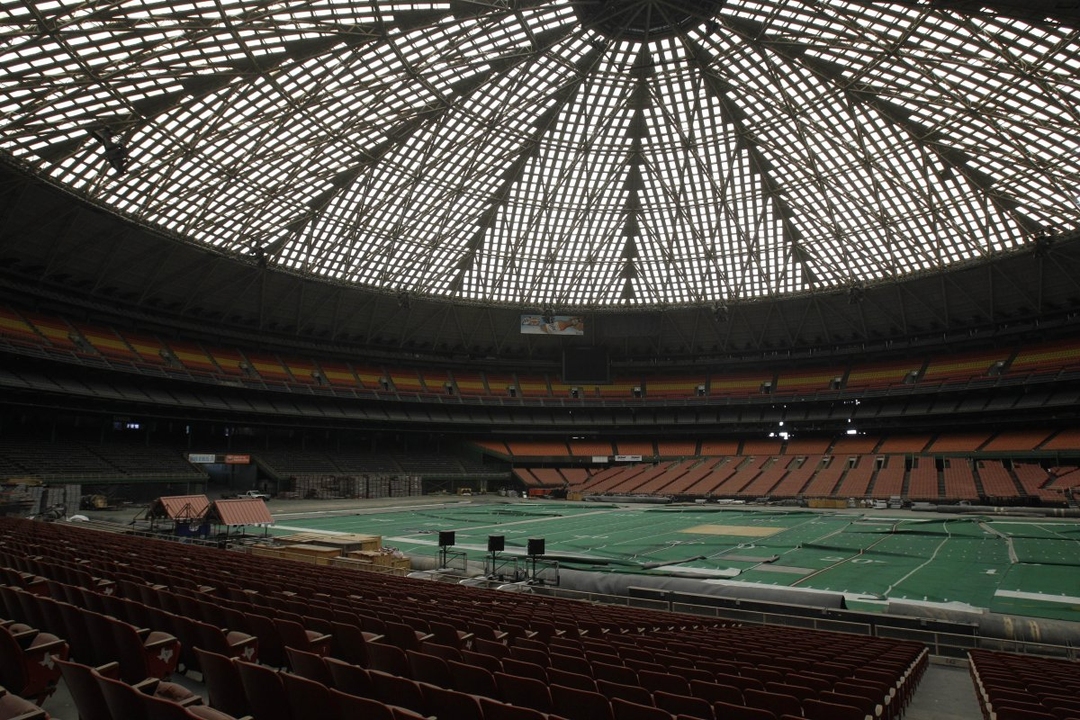
Houston Astrodome Interior. Photo via
American sports stadiums face the problem of sustaining long-term tenants, as newer and more advanced venues become desirable and attractive. Unfortunately for older and outdated stadiums, this inability to keep up with the demand for state-of-the-art features often leads to demolition. This is especially true for the contentious Houston Astrodome in Texas. As the first-ever climate-controlled covered stadium, the Astrodome (which also acted as an emergency shelter for Hurricane Katrina refugees) was once known locally as the "8th wonder of the world," and holds a strong and beloved place among the city's many sports fans. But with the rising popularity of retractable roofs in sporting facilities, the Astrodome quickly lost its shimmery appeal, and has stood vacant since 1995. Because of its isolated location within a sea of parking lots—and because of Houston's distaste for implementing taxes—the city has had a difficult time deciding what to do with the historic structure.
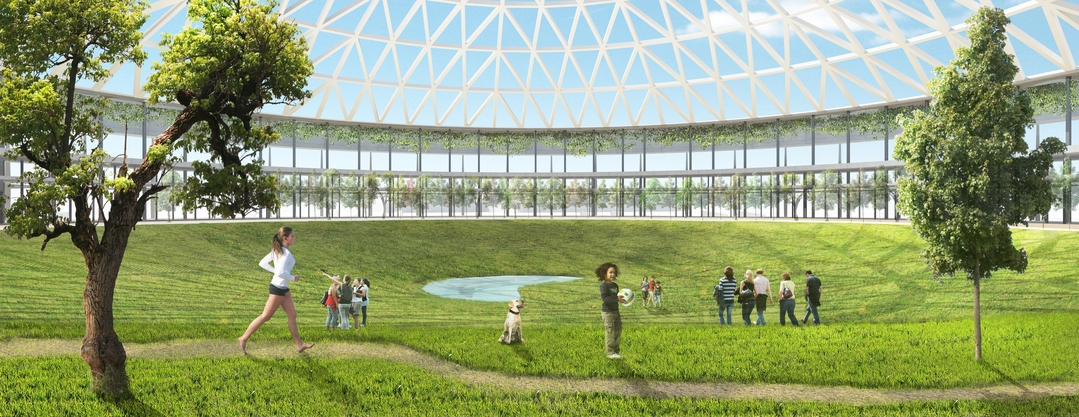
Rendering of the park proposal. Photo via
While demolition remains the most cost-effective solution, many Houston residents have advocated for repurposing the building to preserve its historic associations. So far, the most appealing idea comes from an architecture student at the University of Houston, who calls for stripping the structure down to its skeleton and constructing a public park within its walls. In November, Houston residents will vote on whether to implement a property tax to raise the necessary funds to give the Astrodome new life.
The Astrodome raises questions of the importance of stadiums in the context of city identity, and whether these once cutting-edge structures are worth the money required to save them. However, not all major sporting arenas have solved their abandonment issues with a last resort demolition. Whether through advocating historic preservation, transforming into bustling commercial complex, or adopting eccentric and zany new purposes, the following stadiums were successfully repurposed to once again become vital pieces of city life.
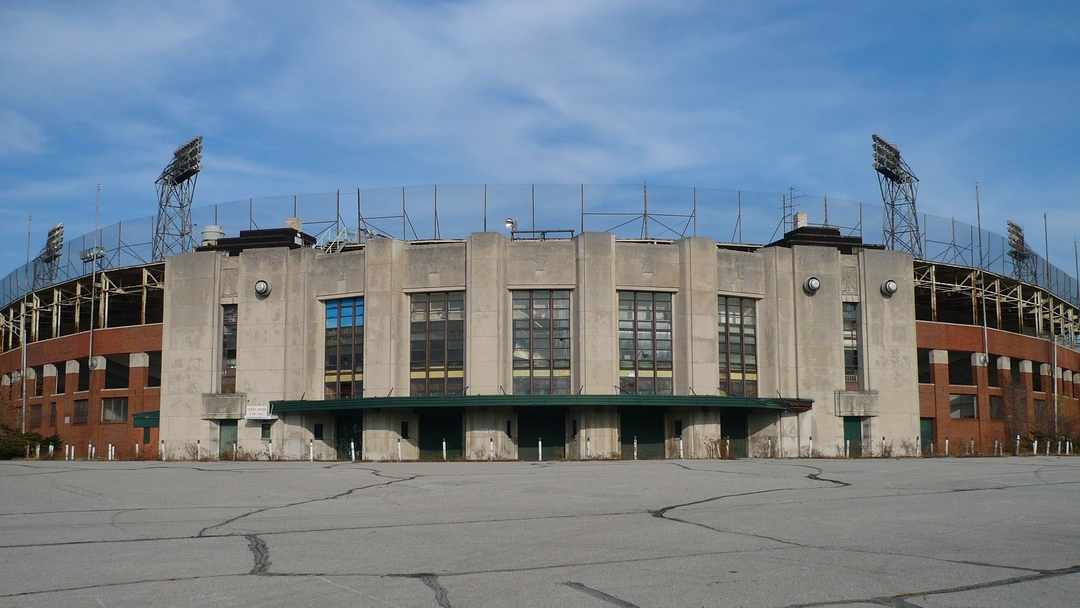
Photo via
Indianapolis' former Bush Stadium was designed by Pierre & Wright, a local firm renowned for their landmark buildings across the city. With an art deco design, the stadium became a beloved fixture of the Indianapolis cityscape, and was eventually added to the National Register of Historic Places in 1995. Bush Stadium officially opened its doors in 1931, being used as the home field for the minor league Indianapolis Indians baseball team. However, after going through a series of name changes, and various reconversions—filling in several times for Chicago's Comiskey Park and Cincinnati's Crosley Field, as well as being transformed into a failed dirt track for auto racing—the stadium was finally abandoned in 1996, and fell into disrepair.
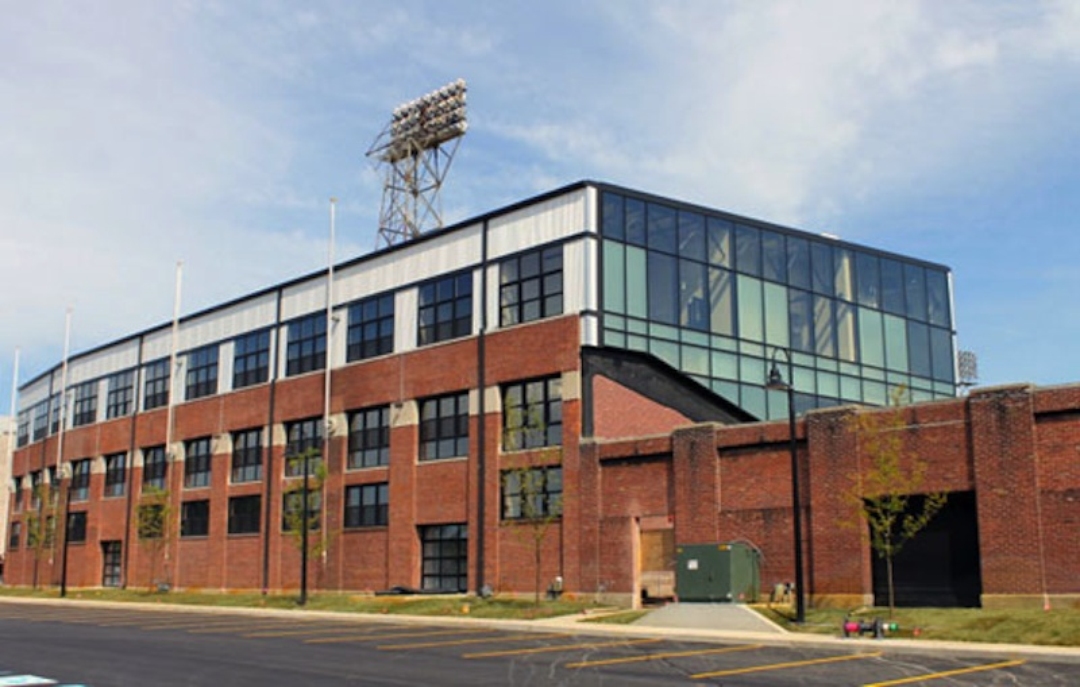
For a brief period between 2008 and 2011, the stadium was used to store traded-in cars from the Cash for Clunkers program before plans to repurpose the facility resurfaced. A successful plan to convert the original Bush Stadium into an apartment complex was approved in 2011, while demolishing parts of the original structure began in early 2012 to make room for new buildings.
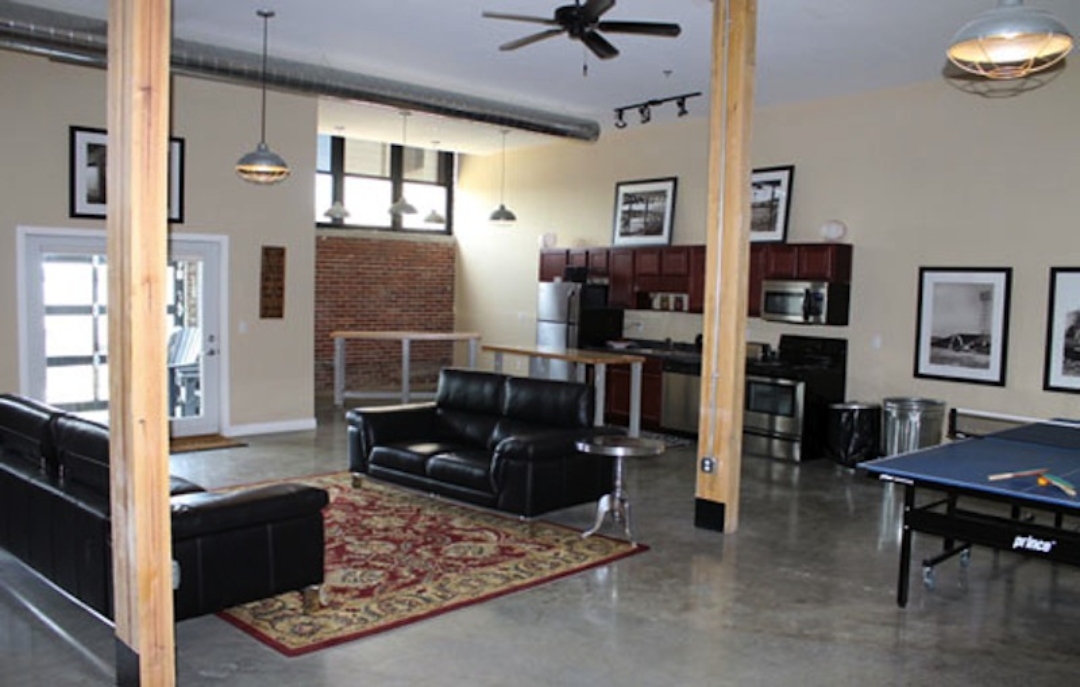
Today, Bush Stadium is known as "The Stadium Lofts," featuring more than 100 studio, one-bedroom, and two-bedroom apartments centered around the original ballpark field. Many of the Art Deco structure's original features remain preserved, like the ticket booth and owner's suite, its details being incorporated into the new apartments. The converted loft building exemplifies a successful compromise between repurposing and historic preservation, without falling victim to over-the-top profit-driven commercial development.
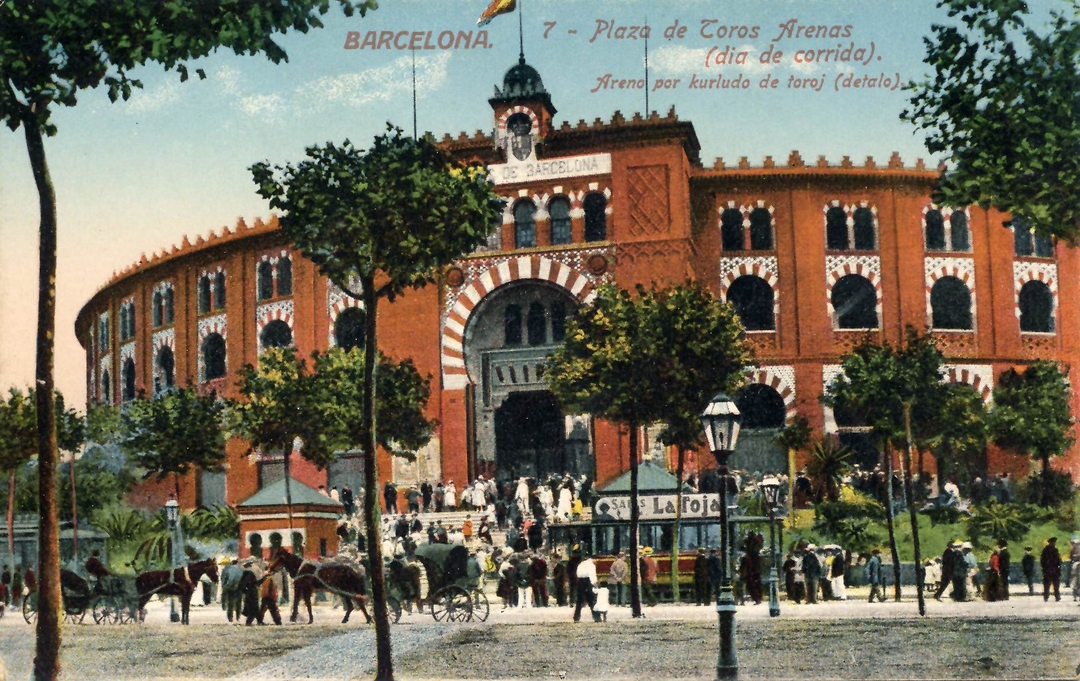
Photo via
Another example of effective stadium repurposing that preserves historic architecture can be found in Barcelona. Originally built in the later part of the 19th century, Las Arenas in Barcelona was an important venue in the Catalonia bullfighting scene. With its cylindrical volume and repeating Moorish arches, the building stood out as a significant civic structure, emblematic of Catalonia's diverse regional identity.
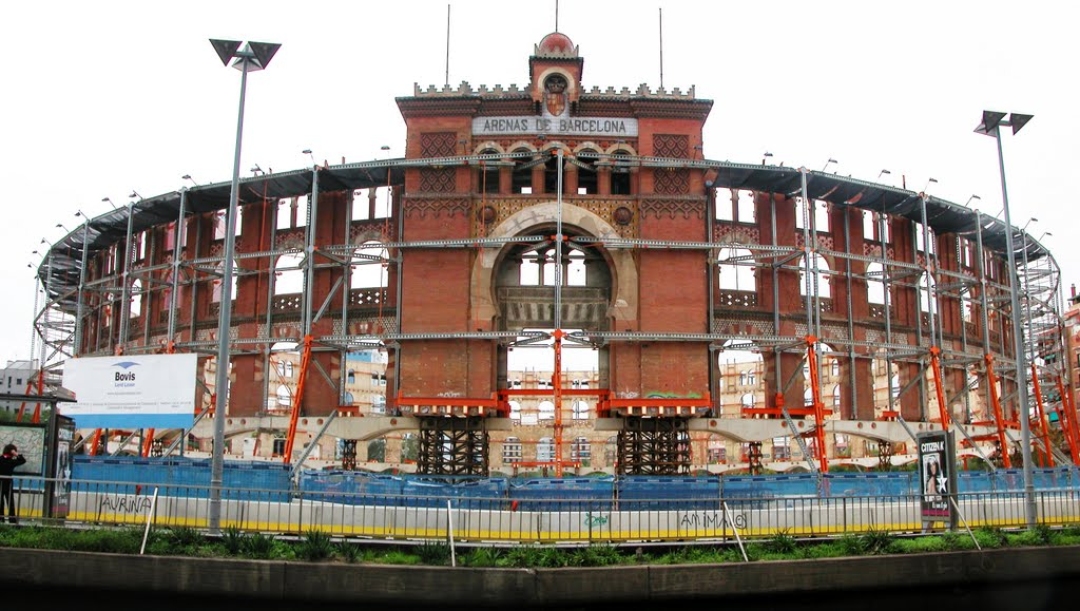
Photo via
Unfortunately, as the popularity of bullfighting began to decline in the late 1970s, the arena fell into disuse and was eventually abandoned. Because of the arena's historical and cultural significance, however, Barcelona's city council declared that the façade should not be demolished.
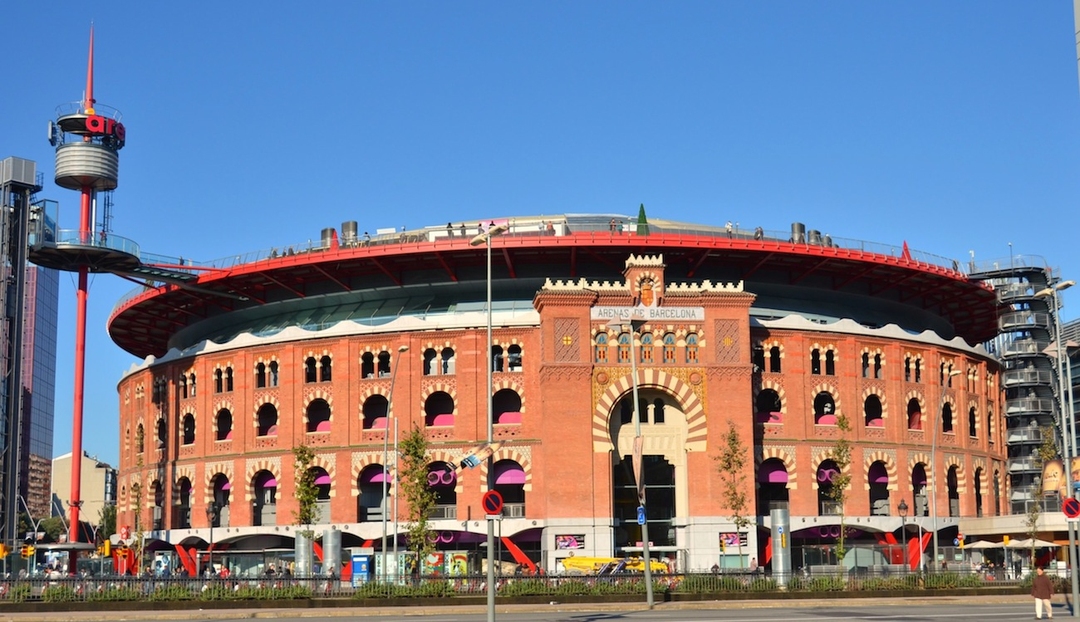
Photo via
Instead, Richard Rogers of Rogers Stirk Harbour + Partners was commissioned to gut the entire structure, leaving only its outer shell, for the redevelopment of a new commercial shopping complex and public space. To establish the building as a renewed urban icon, Rogers designed a massive 76-meter dome over the enclosed commercial spaces below. On the roof of the dome, a 360-degree terrace was built to provide the public with a new area for viewing Barcelona's urban landscape. Large terraces around the perimeter with space for cafés and restaurants were also incorporated into the design, while street-level connections to existing metro station connected the complex to the city's infrastructure.
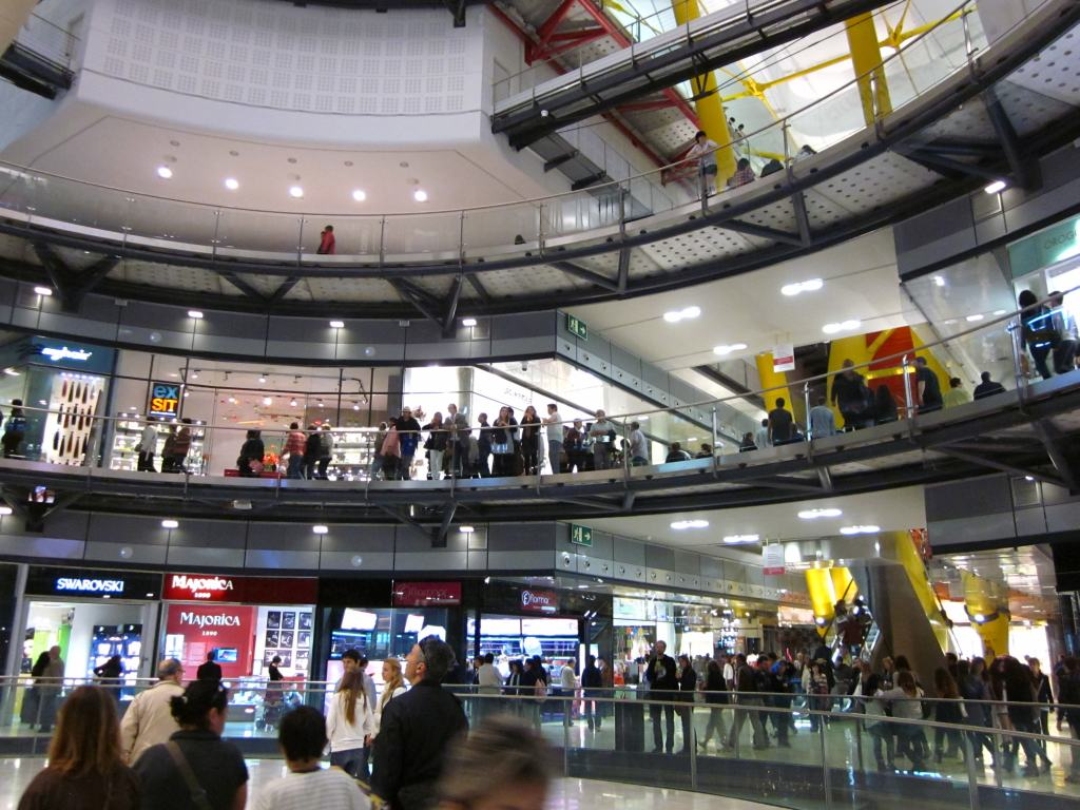
Photo via
Inside, newly constructed cylindrical levels provide shoppers with a climate-controlled consumer haven. Instead of destroying a cherished civic structure, Roger's renovation preserves a historic façade while giving the aging structure a new purpose more in tune with Barcelona's 21st-century identity.
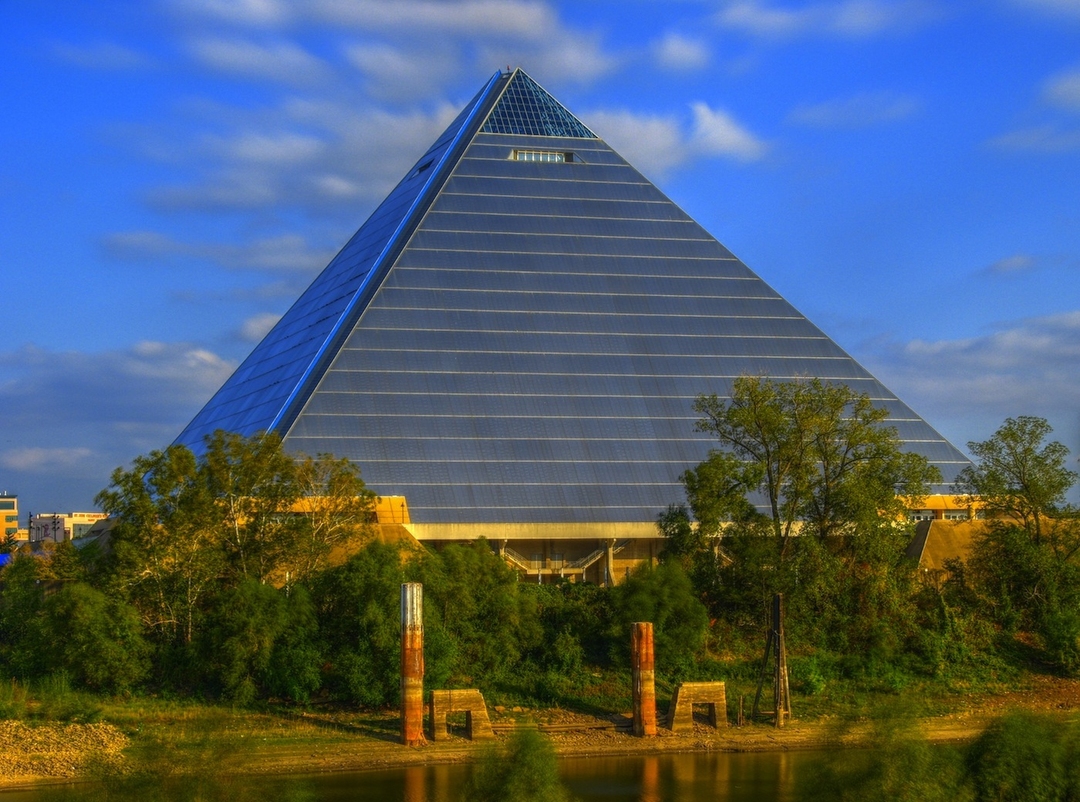
Photo via
In contrast with the rigid modern aesthetic of the mid-20th century, architects in the 1980s embraced a postmodern affinity for historical gestures in their designs. When envisioning a new arena for Memphis, Tennessee—a city named after the ancient capital of Egypt—John Tigrett made perhaps the most outlandish nod to history with the "Great American Pyramid." Memphis' Pyramid Arena stands as a peculiar icon of the city's skyline—a 321-foot stainless-steel clad structure that is a 60% replica of the Great Pyramid of Cheops in Egypt, graced with a statue of Ramesses the Great at the entrance.
When the pyramid opened its doors in 1991, it ranked as the third-largest pyramid in the world. With a seating capacity of over 20,000, the pyramid became the home court of the University of Memphis' men's basketball team—though the arena looked more appropriate for Disney World's Epcot Theme Park.
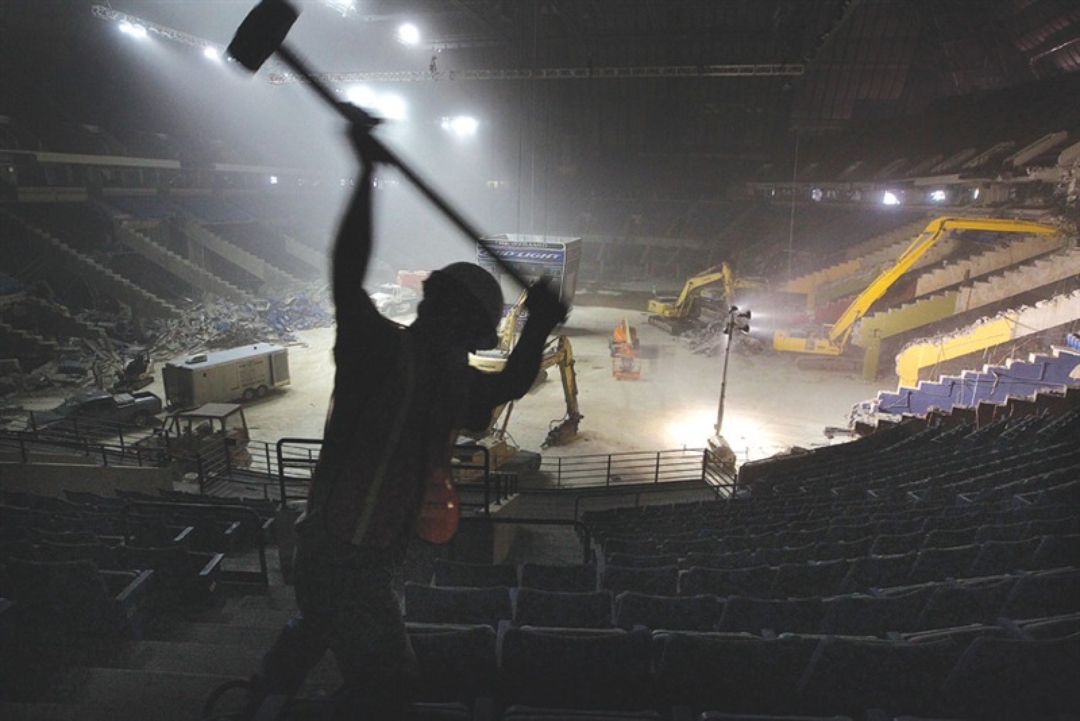
Photo: Lance Murphey via
However, when the NBA's Memphis Grizzlies came to the city in 2001, the Pyramid Arena was in dire need of upgrades to accommodate the professional basketball team's larger crowds. Bringing the sizable pyramid up to date turned out to be more expensive than building a brand new complex, which led to NBA team's relocation to the newly constructed state-of-the-art FedEx Forum in 2004.

Photo via
Having no long-term tenants following the loss of the Grizzlies and competition from the FedEx Forum, the Pyramid stood vacant in 2005. The function of the outdated "symbol of Memphis" soon echoed that of the original Egyptian Pyramids—a burial ground for the dead and decaying.
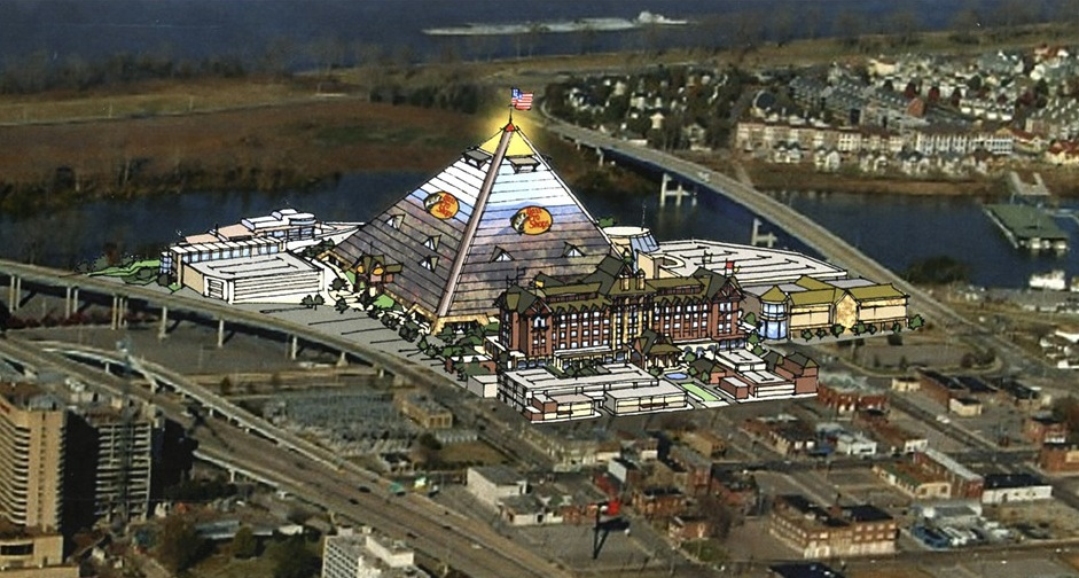
Photo via
As several planned redevelopment plans failed, local residents adopted a nickname for the kitschy structure that played on its postmodern references: The Tomb of Doom. However, after years of delay and speculation that the arena would face demolition like many abandoned sports venues before, the Pyramid will officially be converted into a likewise outre and tacky destination retail center—a massive Bass Pro Shop. The repurposing of the Pyramid Arena has been met with much skepticism and criticism, though the city of Memphis hopes the Bass shop's acres of moose and deer replicas, camouflage attire, and hunting and fishing gear, plus a newly constructed hotel inside the pyramid, attract sizable revenue and contribute to a larger revitalization of the city's riverfront and Pinch districts—though the gleaming Bass Pro Shop logo illuminating the Memphis skyline will most likely have residents mourning the relocation of the Ramesses statue.

When the San Diego Rockets relocated to Houston in 1971, the NBA team was searching for a permanent home, temporarily playing basketball games in various other city arenas including the Astrodome, while construction began on a new multi-use indoor arena. Officially opening in 1975, the Summit ushered in a new era of sports arena that included more up-scale amenities that helped the NBA become a household name. Architecturally, however, the Summit looked more like an anonymous corporate headquarters dotting the landscapes of highways (an aesthetic often found in the sprawling metropolis) with its dark-mirrored windows and featureless concrete façade.
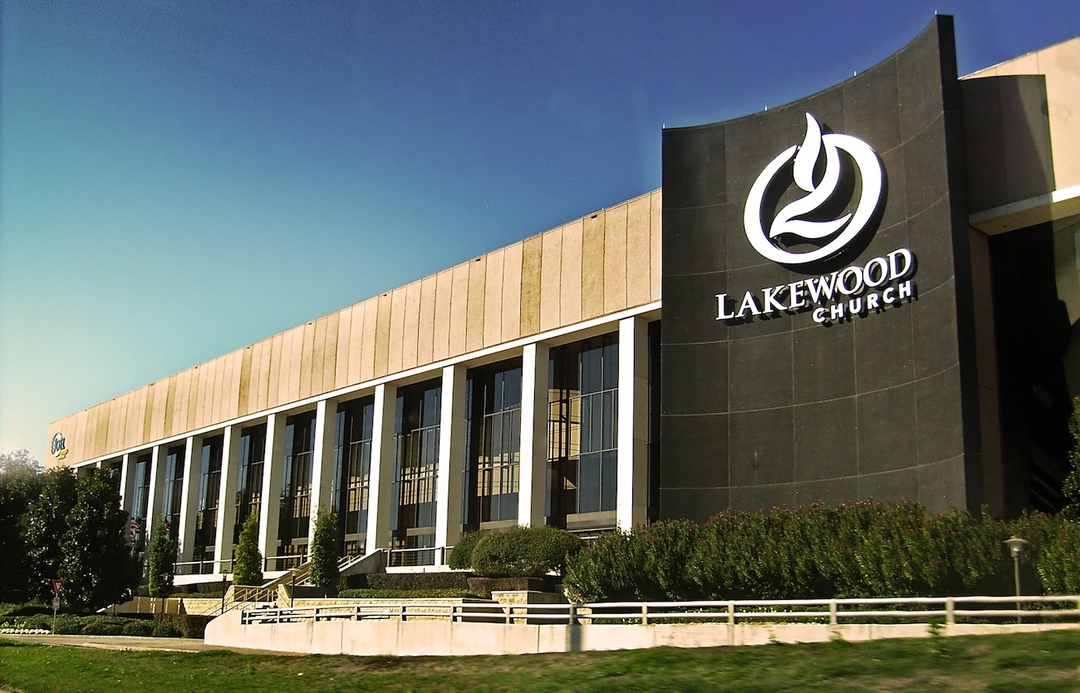
Aside from being solely a sports venue, the Summit hosted numerous landmark concerts by artists like Michael Jackson, Madonna, and Led Zeppelin. In 1998, the Summit was renamed Compaq Center, representing a new operating partnership with Compaq Computer Corporation. However, after the five-year lease expired, and Houston residents advocated for a larger downtown sports venue, the arena was vacated and eventually leased to the Lakewood Megachurch, signaled by a ground-to-roof curved block sign bearing the church's large evangelizing emblem.
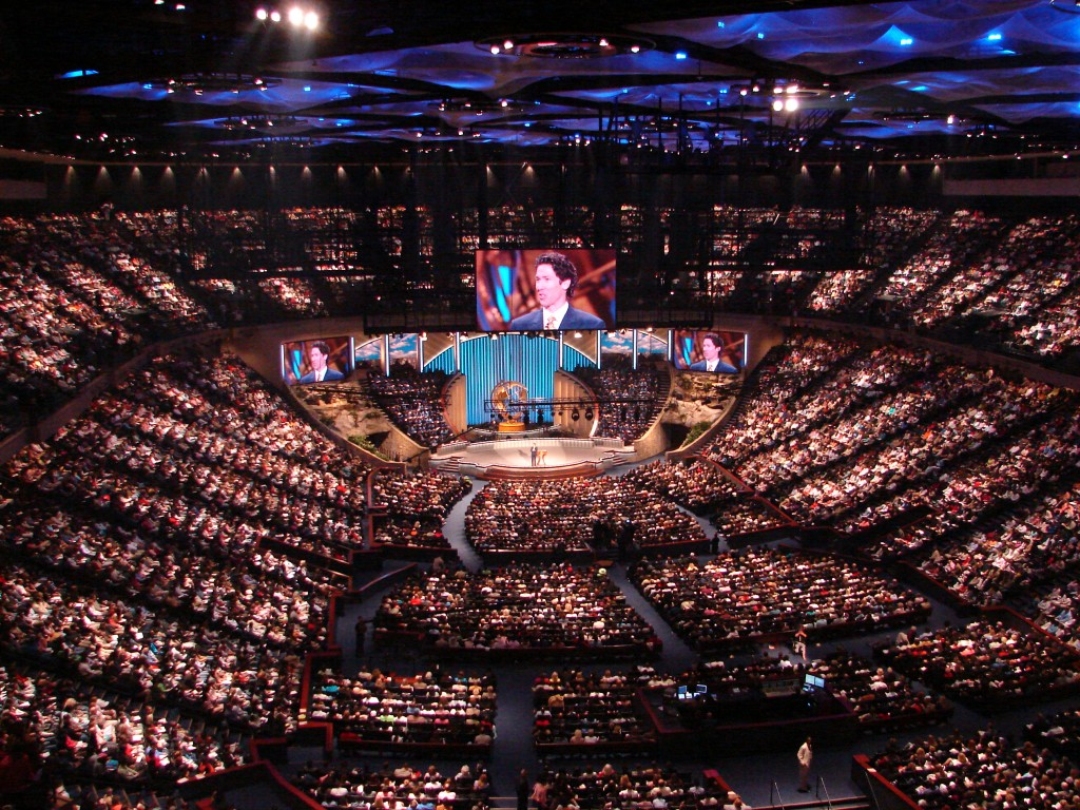
In perhaps the most peculiar stadium arena revitalization yet, Lakewood Church invested $95 million into converting the structure to accommodate the massive 16,000+ crowds of worshippers coming to hear the words of the evangelical pastor Joel Osteen, famous for his late-night televangelist programs. In 2010, Lakewood officially purchased the former arena for $7.5 million, guaranteeing the structure's occupancy for religious purposes for the next 30 years.
> via Architizer